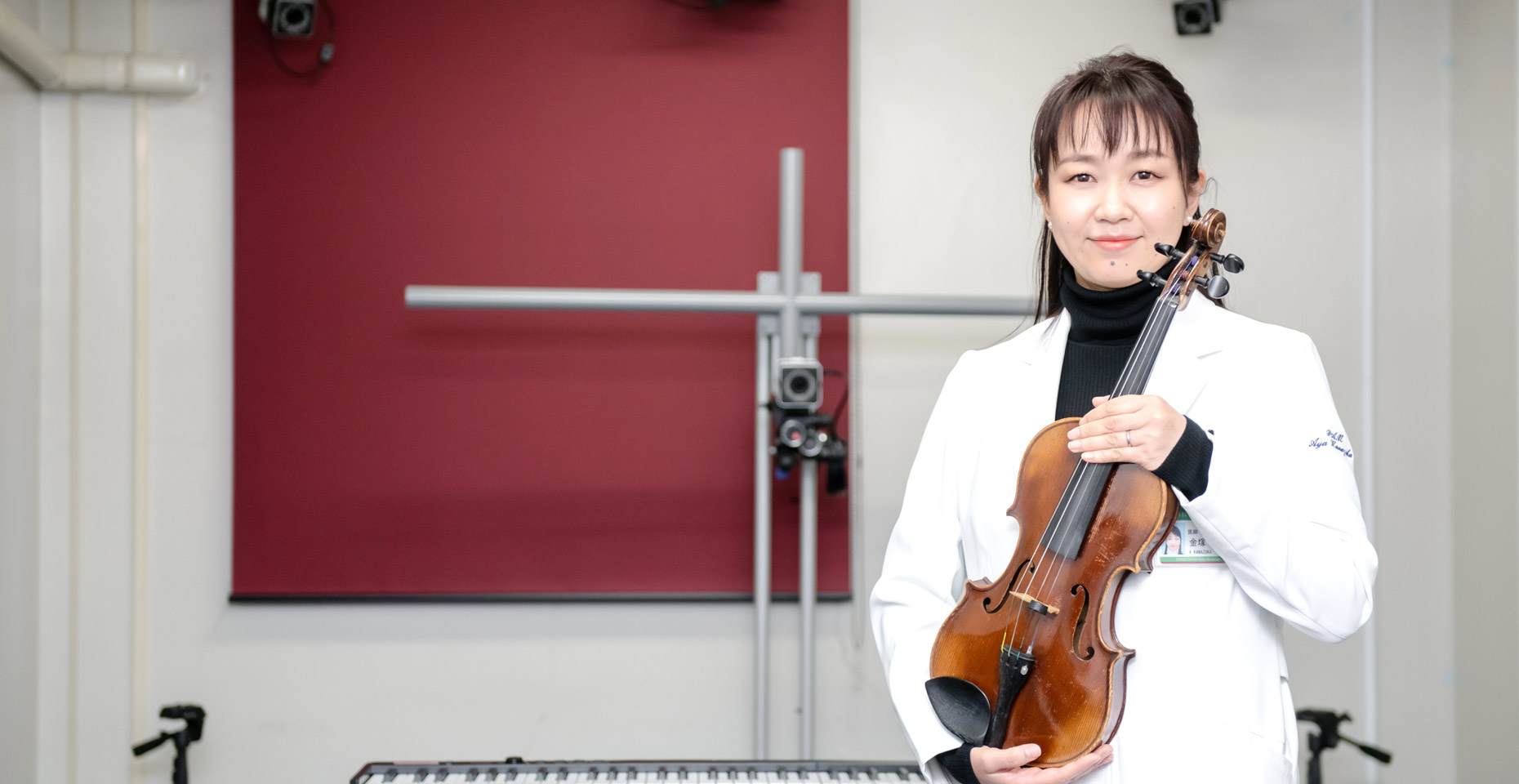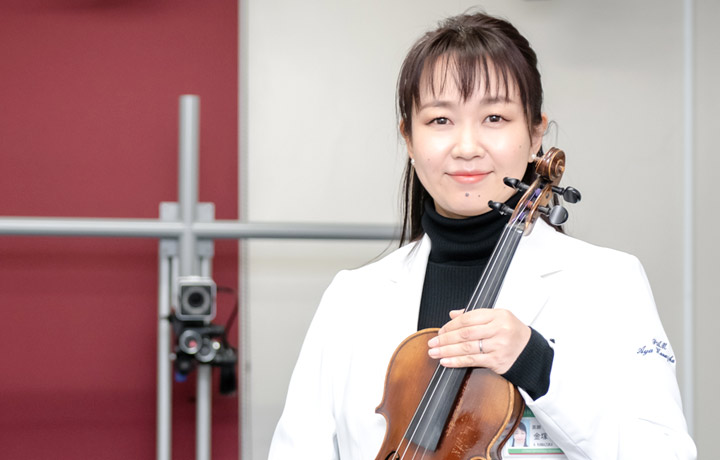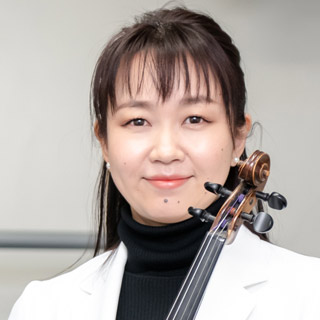The existence of Performing Arts Medicine (PAM), which specializes in treating pianists, ballet dancers, and other artists who overwork their bodies, is still relatively unknown in Japan compared to sports medicine, which primarily focuses on athletes. We interviewed Dr. Aya Kanezuka, who established a specialized outpatient clinic in the Department of Orthopedic Surgery at Chiba University Hospital in 2018, to explore her journey and goals toward establishing the PAM Center.
Having the patient play their instrument in the examination room to identify the underlying causes of their disability
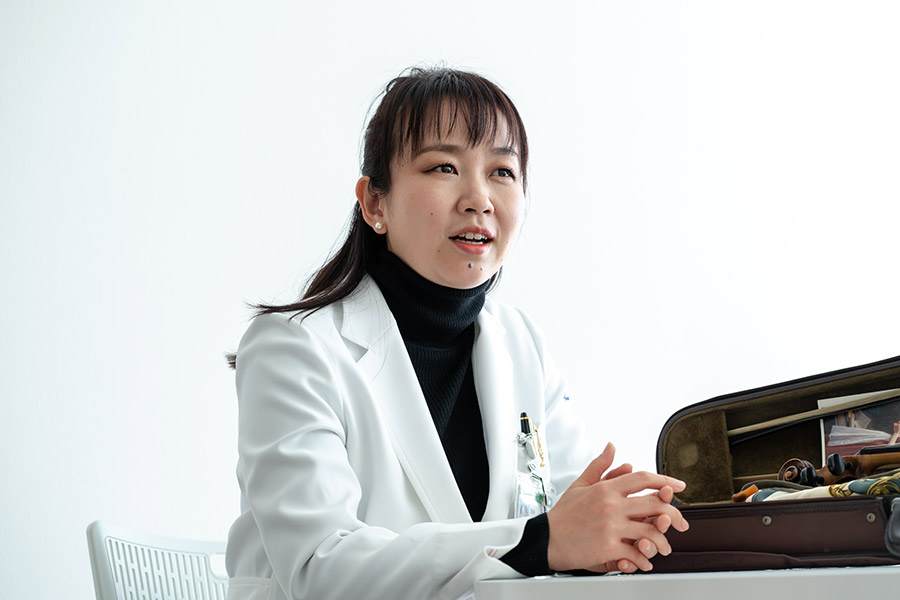
What is PAM in the first place?
You may not be familiar with it, but in Europe, where performing arts such as classical music and ballet have a long history, there has been a recognition of the necessity for medicine that can address the specific issues faced by performers.
Personally, I specialize in providing medical care and conducting research primarily for musicians. After gaining experience as a hand surgeon, as many instruments require the use of the upper extremities for playing, I established a specialized outpatient clinic for PAM.
The techniques and knowledge available to PAM specialists are not dramatically different from those of other hand surgeons. However, let’s consider a scenario where a professional pianist seeks orthopedic surgery for difficulties in finger movements and successfully recovers to the point of resuming their daily activities without any issues. Despite this achievement, if they fail to regain the ability to perform the intricate movements essential to their profession as a musician, their life and identity may be at stake.
One of the key roles of PAM specialists is to have a thorough understanding of the challenges and anxieties that musicians often face, as well as their desired goals. By empathizing with the patients and working towards realistic goals, PAM specialists combine their knowledge and clinical experience to address the specific obstacles unique to the field.
What kind of examinations are conducted at the PAM outpatient clinic?
In addition to the medical interview, patients will be asked to perform their instruments in the examination room. It is important to bring their own instrument and demonstrate their usual performance movements is crucial, as the routine movement may potentially contribute to the development of disability.
Afterward, detailed examinations are conducted as needed to determine the treatment plan, including rehabilitation strategies or surgical procedures. In addition to the Rehabilitation Department, we collaborate comprehensively with specialists from Neurology and Psychiatry. In the case of focal dystonia, a condition that affects precise movements exclusively during the performance, the results of treatment are now becoming evident through this interdisciplinary cooperation.
When the PAM outpatient clinic was established in 2018, it was relatively unknown to musicians. However, recently, we have seen an increase in the number of patients who come from distant locations and express their desire to be treated here. I am delighted to be able to assist musicians and contribute to their well-being.
From the question, “Why are there no surgeons specializing in musicians?”

What led your interest in PAM?
When I was a child, I learned piano, figure skating, ballet, and violin. Among them, music held a special place in my heart, especially the violin. I joined the orchestra in junior high school and continued as a violinist, eventually becoming the concert mistress in high school and university.
However, during my university years in medical school, I experienced an accident while skiing, resulting in a fracture in my right arm. It was a devastating experience, and I couldn’t help but blame myself for the injury. As I began the recovery process, I sought advice from orthopedic surgeons about when I could resume practicing, but I couldn’t find a clear answer. The uncertainty and anxiety I felt only grew stronger.
It was during that time that I began to wonder, “If there are specialized doctors for athletes, why aren’t there doctors who specialize in treating musicians?” This question sparked my curiosity and eventually led to my interest in PAM.
Around the time I finished my orthopedic surgery training in Japan, I pursued further studies in PAM by studying in Germany and England. During my time there, I was exposed to the vibrant culture and environment surrounding PAM, where experts leading PAM care and research held dual degrees in music and medicine. Some music universities even accommodated PAM clinics. I was truly overwhelmed by the richness of PAM culture in Europe.
Upon returning to Japan, I was assigned to a different organization than Chiba University Hospital. During my secondment, I was fortunate enough to have one day a week dedicated to research. With that opportunity, I requested permission from Professor Seiji Otori of Orthopedic Surgery to establish a PAM outpatient clinic, utilizing that dedicated research day. He kindly granted my request, and thus, the PAM clinic was born.
Starting Motion analysis with motion capture*
*The technique of measuring and digitally recording the position and movement of human joints and other body parts. It is often used to measure the physical data of athletes and to recreate realistic human-like movements of characters in animation and gaming.

In addition to your clinical responsibilities, you are engaged in basic research.
While motion analysis using motion capture (optical three-dimensional motion analysis) is commonly performed for studying gait and posture, there is a scarcity of reports on motion analysis of the upper extremities. This limited research may be attributed to the considerably higher number of joints in the hand compared to other parts of the body, as well as the complex nature of their movements.
However, I have always thought that it is crucial to have knowledge based on the biomechanics of the upper extremities, specifically movement analysis for patients who are musicians. This knowledge is essential for making decisions regarding surgical techniques and developing effective rehabilitation programs.
So, you have opened many doors that seemed closed, and this is where you are. Is motion analysis collaborative research with the field of engineering?
Yes, it is a collaborative effort with the Center for Frontier Medical Engineering of Chiba University. We attach markers to each joint of the pianists’ upper limbs to observe their movements. Additionally, we compare and analyze the differences in movement patterns between experts (doctors) and beginners (students) in performing blood sampling procedures.
What I am currently working on is joint research with a professor specializing in image analysis. However, I am also keen on collaborating with experts in motion analysis, especially those with experience in optical and magnetic three-dimensional motion analysis. If you have any interest or expertise in this field, I would greatly appreciate it if you could reach out to me.
From clinical research support to collaborative work with music universities
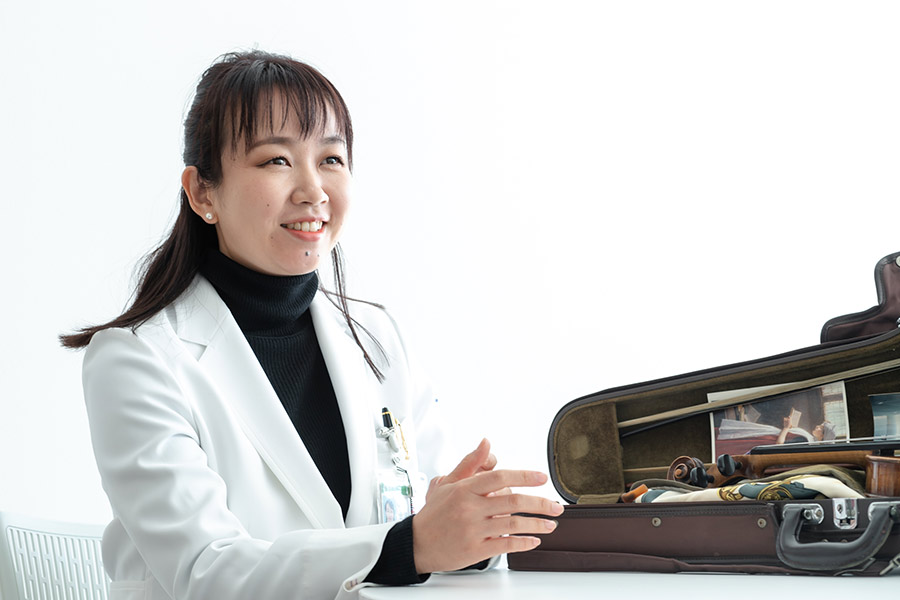
I heard that you are also a member of the Translational Research and Development Center (TRAD) of Chiba University. What is your role in TRAD?
It is an organization dedicated to supporting clinicians’ research by facilitating the translation of clinical questions and needs into research projects and ensuring their safe and successful execution.
As a university hospital, Chiba University Hospital has a mission to conduct high-quality research. However, clinical research comes with specific challenges, including patient protection and extensive administrative procedures.
In order to address these challenges, TRAD works as a support system for clinicians, with staff members who have expertise in both research and clinical practice. We provide comprehensive support to clinicians throughout the entire research process, from project initiation to publication. Our role is to act as an accelerator by assisting with research protocol reviews and administrative procedures. Additionally, we act as a break by ensuring data management and prioritizing patient protection.
You sound incredibly busy wearing three hats: PAM outpatient, PAM research, and TRAD.
Actually, make that four hats. In 2022, I started a collaboration with the Tokyo College of Music. We have established a partnership agreement, and I am giving lectures to educate students on medical examinations and disability prevention. On top of that, I have a 3-year-old child at home, so time always feels limited.
However, my goal is to establish a hub for high-quality PAM research in order to foster a growing community of PAM medical practitioners and researchers in Japan. I strive to manage my time every day to make progress toward this vision. If you are a student or young researcher interested in PAM, I warmly invite you to visit our orthopedic surgery department.
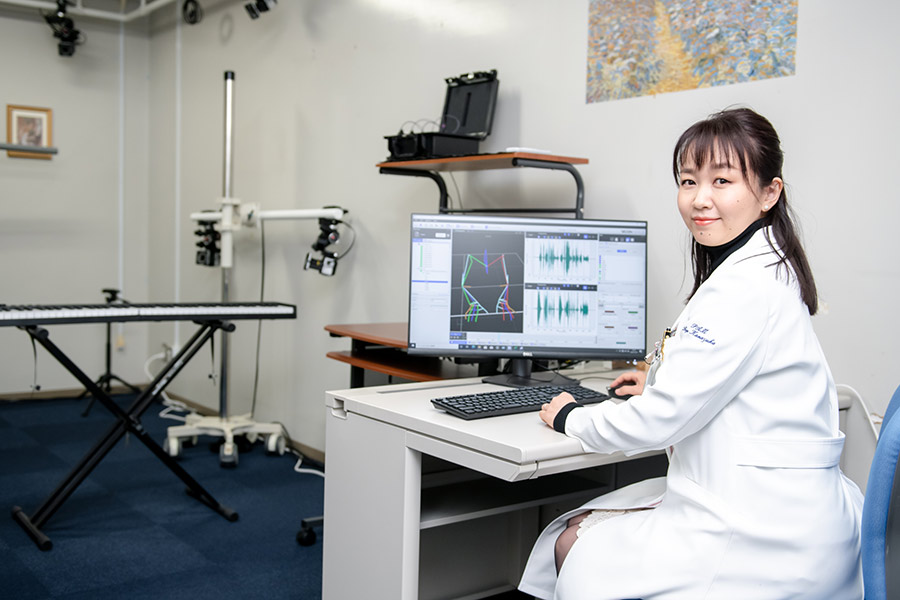
Recommend
-

From ELSI to RRI: Exploring the Ethical Landscape of Science and Technology
2024.11.21
-

‘Synergistic Campus Evolution with the Community’ Chiba University Design Research Institute (Part 2): Igniting ‘Cross-fertilization’ for a Revolutionary Vision
2023.12.25
-

Non-Injectable Mucosal Vaccines Providing Safe and Less Stressful Immunization
2022.07.26


